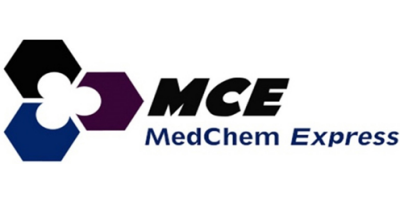

- Home
- Companies
- MedChemExpress LLC (MCE)
- Products
- MedChemExpress - Model Dalazatide - ...
MedChemExpress - Model Dalazatide - 1081110-69-1
Dalazatide (ShK-186) is a specific Kv1.3 potassium channel peptide inhibitor. Dalazatide can be used in the study of autoimmune diseases such as multiple sclerosis (MS), lupus erythematosus, psoriasis, rheumatoid arthritis, type 1 diabetes and inflammatory bowel disease[1][2][3].MCE products for research use only. We do not sell to patients.
Dalazatide
MCE China:Dalazatide
Brand:MedChemExpress (MCE)
Cat. No.HY-P3507
CAS:1081110-69-1
Synonyms:ShK-186
Purity:99.23%
Storage:Sealed storage, away from moisture Powder -80°C 2 years -20°C 1 year *In solvent : -80°C, 6 months; -20°C, 1 month (sealed storage, away from moisture)
Shipping:Room temperature in continental US; may vary elsewhere.
Description:Dalazatide (ShK-186) is a specific Kv1.3 potassium channel peptide inhibitor. Dalazatide can be used in the study of autoimmune diseases such as multiple sclerosis (MS), lupus erythematosus, psoriasis, rheumatoid arthritis, type 1 diabetes and inflammatory bowel disease.
In Vitro:Dalazatide (ShK-186) (0-1000 pM) blocks the Kv1.3 current in the Ova-specific GFP+ effector memory T (Tem) cells in a dose-dependent manner with a Kd of 65 ± 5 pM[3]. Dalazatide (0-100 nM; 3 days) inhibits CCR7− T cell proliferation in a dose-dependent manner[3]. Dalazatide (100 nM; 30 min) immobilizes effector memory T (Tem) cells at inflammatory sites by suppressing calcium signaling and thereby preventing β1 integrin activation[3].
In Vivo:Dalazatide (ShK-186) (100 μg/kg; s.c.; once) inhibits delayed-type hypersensitivity and suppresses the in vivo motility and activation of Tem cells in rats[3].
Sequence:H-{pY}-{AEEA}-Arg-Ser-Cys-Ile-Asp-Thr-Ile-Pro-Lys-Ser-Arg-Cys-Thr-Ala-Phe-Gln-Cys-Lys-His-Ser-Met-Lys-Tyr-Arg-Leu-Ser-Phe-Cys-Arg-Lys-Thr-Cys-Gly-Thr-Cys-NH2 (disulfide bridge:Cys5-Cys37,Cys14-Cys30,Cys19-Cys34)
Hot selling product:FGFR1/DDR2 inhibitor 1 | LEI-401 | DY131 | Monotropein | trans-Cinnamaldehyde | Aumitin | Ozanimod (hydrochloride) | 1-Palmitoyl-2-oleoyl-sn-glycero-3-phospho-(1'-rac-glycerol) (sodium salt) | Ranolazine | Isorhamnetin-4-O-neohespeidoside
Trending products:Recombinant Proteins | Bioactive Screening Libraries | Natural Products | Fluorescent Dye | PROTAC | Isotope-Labeled Compounds | Oligonucleotides
References:
[3]. Matheu MP, et al. Imaging of effector memory T cells during a delayed-type hypersensitivity reaction and suppression by Kv1.3 channel block. Immunity. 2008 Oct 17;29(4):602-14. [Content Brief]
Brand introduction:
• MCE (MedChemExpress) has a global exclusive compound library of more than 200 kinds, and we are committed to providing the most comprehensive range of high-quality small molecule active compounds for scientific research customers around the world;
• More than 50,000 highly selective inhibitors and agonists are involved in various popular signaling pathways and disease areas;
• The products cover a variety of recombinant proteins, peptides, commonly used kits, more PROTAC, ADC and other characteristic products, widely used in new drug research and development, life science and other scientific research projects;
• Provide virtual screening, ion channel screening, metabolomics analysis detection analysis, drug screening and other professional technical services;
• It has a professional experimental center and strict quality control and verification system;
• Provide LC/MS, NMR, HPLC, chiral analysis, elemental analysis and other quality inspection reports to ensure the high purity and high quality of products;
• The biological activity of the products has been verified by the experiments of customers in various countries;
• A variety of top journals such as Nature, Cell, Science and pharmaceutical patents have included the scientific research results of MCE customers;
• Our professional team tracks the latest pharmaceutical and life science research and provides you with the latest active compounds in the world;
• It has established long-term cooperation with the world's major pharmaceutical companies and well-known scientific research institutions。
